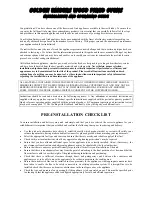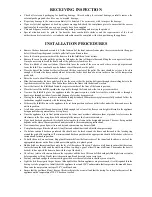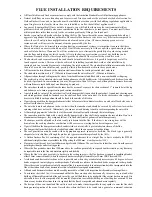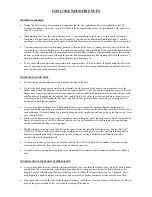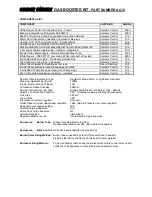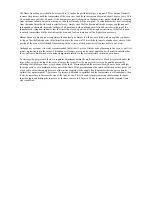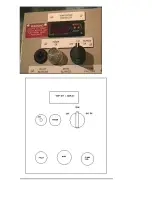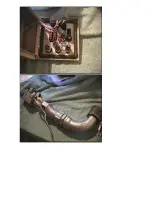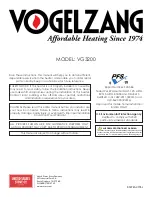
USING THE WOOD FIRE OVEN
LIGHTING THE FIRE
•
During the first two days of operation it is important that the fire temperature be raised gradually so that all
moisture can disperse from the oven walls without forming super heated steam. We recommend a rise of no more
than 50
o
C per hour.
•
When lighting the fire at the start of the day use 5 - 7 logs depending on their size. It is safe to use low odour
firelighters or a gas poker to start the fire; alternatively you can use the traditional kindling method. If you use
newspaper or resinous timbers, such as pine, for kindling then it may be necessary to clean the flue more regularly.
•
You can either start the fire in its normal position at the side of the oven or you may prefer to start the fire in the
centre of the oven floor and then move the coals and burning logs into position once the oven temperature has been
reached. We have been unable to determine any specific advantage to either of these methods and so they remain
an issue of personal preference, although the general heat dispersion achieved by lighting the fire in the centre of
the oven would seem, in theory, to result in the most rapid heating cycle.
•
The oven should reach operating temperature after approximately 30 to 40 minutes. (Except during the first week
or so of operation when excess moisture needs to be driven from the cooking chamber and the residual heat levels
need to be built up in the sub base heat bank).
MAINTAINING THE FIRE
•
The best fire position during operation is hard to one side of the oven.
•
A fire at the back may be more visible to the clientele, but loses much of the convection heat properties as the
flames wrap around the chamber roof towards the tunnel and flue. A side fire results in optimum convection as the
flames wrap from side to side across the oven chamber roof. In addition, adding wood to a rear fire will inevitable
result in debris dropping onto the cooking floor (and food in the oven) as the wood passes across the entire oven
from front to back. The fire should take up as little floor area as possible. Some operators use a simple metal or
brick form to hold the fire in place.
•
It is very important to always have a good strong flame so as to ensure the cooking chamber temperature is
properly maintained and the top of the pizzas are toasted. This will prevent the bases from burning before the top is
cooked through. A single flaming log is usually adequate in the small oven and one or two in the large oven. Never
cook with just coals!.
•
Whenever the flame starts dying or the temperature starts to drop, put a new log onto the fire. Do not wait until the
flames are completely out as this will mean that the new log will smoulder at first, absorbing heat and emitting
smoke, rather than bursting into strong flame.
•
Should you need to re-ignite your fire during the course of the day, paraffin firelighters may be used. Do NOT
COOK ANYTHING in the oven till after the paraffin block is totally burnt out as this will result in the paraffin
fumes impregnating the food. Alternatively, induce a flame by casting a handful of semolina flour or other
combustible onto the glowing coals.
•
At the end of the day spread the coals over the cooking floor. This will burn off any residual food material and
cleans and sterilises the floor. (See the section on cleaning the oven).
•
At night, seal the oven mouth using the door or aluminium foil to maximise heat retention until the next light up
time.
CONTROLLING THE FLOOR TEMPERATURE
•
It is very important to always monitor the temperature of your oven floor in relation to the rest of the oven. Should
you find the floor is too hot and tends to burn the underside of your pizza base before the top is toasted, or the
dough is cooked through, mop the floor with clean water to reduce the floor temperature. Use a standard “hairy”
mop dipped in a bucket and then wrung out so as not to throw excessive amounts of water onto the oven floor.
•
Do not put cold water on the tiles as the thermal shock may crack them. Also do not dump cold water or a cold wet
mop on the granite mantle as this will result in cracking of the mantle.
Summary of Contents for Wood Fired Ovens
Page 14: ...GOLDEN EMBERS AC11 CLASS 1 GAS WOOD FIRE GAS TRAIN SCHEMATIC AND LEGEND ...
Page 17: ......
Page 18: ......

